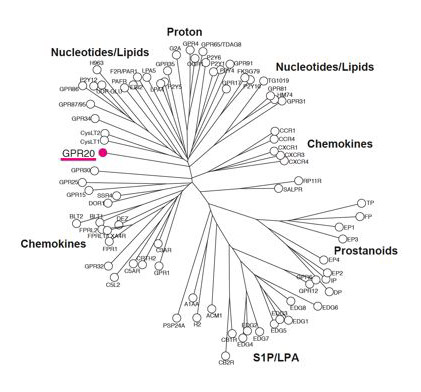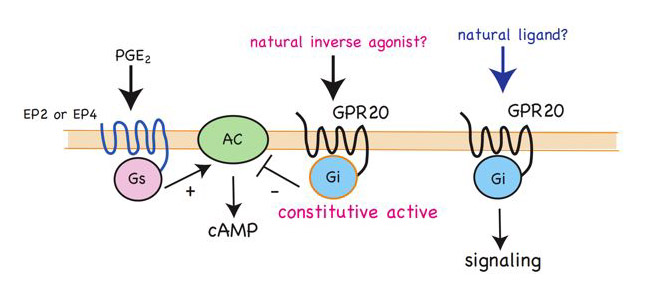Characterization of an orphan G protein-coupled receptor, GPR20, that constitutively activates Gi proteins
Although GPR20 was closely related to nucleotide or lipid receptors, the functional role of this receptor, as well as its endogenous ligand, remain unclear. We demonstrate that GPR20 is constitutively active in the absence of ligand, leading to continuous activation of its coupled G proteins. When GPR20 was exogenously expressed in HEK293 cells the basal level of cAMP was significantly decreased. A remarkable increase in [35S]guanosine 5’-(g-thio) triphosphate (GTPgS) binding to membrane preparations was also observed in GPR20-expressing cells. These effects of GPR20 overexpression were diminished in cells treated with pertussis toxin, suggesting that the expression of GPR20 results in the activation of Gi/o proteins. Knockdown of GPR20 in PC12h cells resulted in an elevation of the basal cAMP level, suggesting that the endogenous GPR20 achieves a constitutively or spontaneously active conformation. Furthermore, enhancement of [3H]thymidine incorporation was also observed in the GPR20-silencing cells, implying that the GPR20 expression seems to attenuate PC12h cell growth. Taken together, these data indicate that GPR20 constitutively activates Gi proteins without ligand stimulation. The receptor may be involved in cellular processes including control of intracellular cAMP levels and mitogenic signaling.
Program members
Takao Shimizu (Department of Biochemistry and Molecular Biology, Faculty of Medicine)

figure1. Phylogenetic tree of various human GPCRs including GPR20. GPR20 is shown in a black circle.

figure2. Schematic model of GPR20 function
